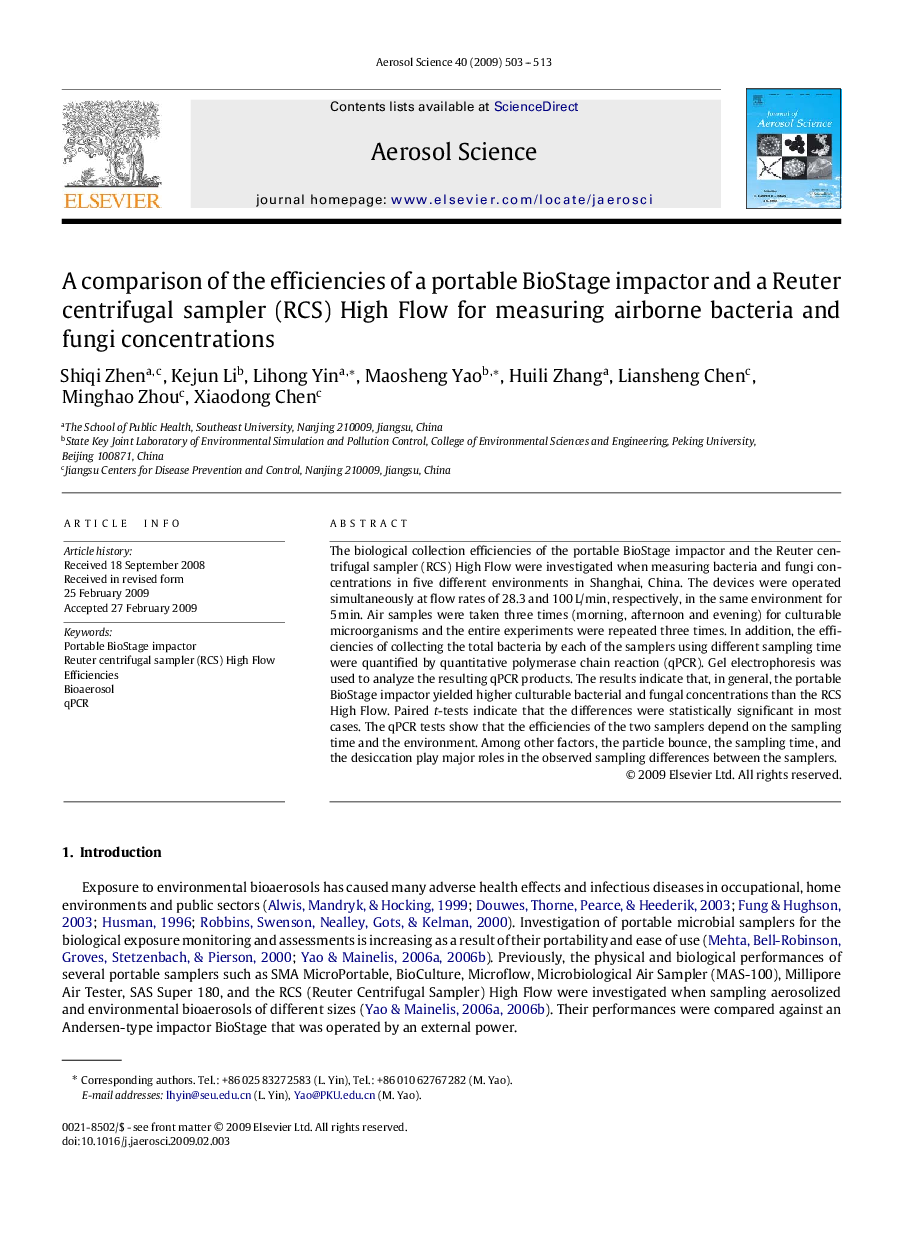| Article ID | Journal | Published Year | Pages | File Type |
|---|---|---|---|---|
| 4452946 | Journal of Aerosol Science | 2009 | 11 Pages |
The biological collection efficiencies of the portable BioStage impactor and the Reuter centrifugal sampler (RCS) High Flow were investigated when measuring bacteria and fungi concentrations in five different environments in Shanghai, China. The devices were operated simultaneously at flow rates of 28.3 and 100 L/min, respectively, in the same environment for 5 min. Air samples were taken three times (morning, afternoon and evening) for culturable microorganisms and the entire experiments were repeated three times. In addition, the efficiencies of collecting the total bacteria by each of the samplers using different sampling time were quantified by quantitative polymerase chain reaction (qPCR). Gel electrophoresis was used to analyze the resulting qPCR products. The results indicate that, in general, the portable BioStage impactor yielded higher culturable bacterial and fungal concentrations than the RCS High Flow. Paired t-tests indicate that the differences were statistically significant in most cases. The qPCR tests show that the efficiencies of the two samplers depend on the sampling time and the environment. Among other factors, the particle bounce, the sampling time, and the desiccation play major roles in the observed sampling differences between the samplers.
